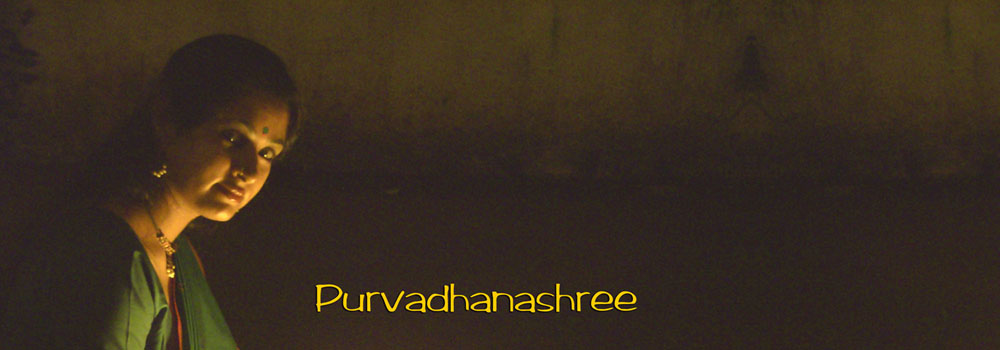
Vilasini Natyam is the name given to the dance tradition of the temple dancers of Andhra Pradesh. These dancers were known as Kalavantulu. Unlike similar traditions that have evolved in other regions of the country, the ritual-specific (Gudi Seva), ceremonial-specific (Kacheri Ata) and dance operatic (Ata Bhagavatam) aspects of the temple dances form an integral part of the Vilasini Natyam repertoire. Apart from being a distinctive style, Vilasini Natyam is unique in that it retains the functional classification of the art practiced by these Kalavantulu, suitably adapted for modern-day stage presentation.
An exquisite form of expression shaped over centuries enriched by the artistic imagination of countless temple dancers this dance tradition has been painstakingly researched and recast by Swapnasundari, who worked under the guidance of Maddula Lakshmi Narayana, who was an exponent of this tradition.
Some of the Major Perfomances
Bharatanatyam
• Thyagaraja Aradhana Festival at Tirupati, June 1997
• Natyanjali Festival, Chidambaram, February 1999, 2006
• Jeevan Pani Festival, India International Centre, September 1999
• Spirit of Youth Festival, Chennai, October 1999
• Inaugural performance Music Academy, Chennai, December 2000
• Guru Vandana – Performance in memory of Guru Sikkil Ramaswamy Pillai, Triveni Kala Sangam, New Delhi, May 2001
• India Habitat Centre, New Delhi, April 2002
• Diva International Chinmaya Misssion, New Delhi, November 2002
• India International Centre, December New Delhi 2003
• Swarna Nritya Pratibha, Sangeet Natak Akademi, February 2004.
• Tarangam Festival, August 2005, 2006
• World Buddhist Conference, Bir, Himachal Pradesh, November 2005.
• Sanskriti Foundation, March 2005
• Workshops in American International School, New Delhi-2003-2005
• Soorya Festival, Trivandrum, 2006
• Yuva Mahotsava, Bharat Kalachar, Chennai, 2007
• The Grand Festival, Khajuraho, 2008
• Third Raghu Sinha Memorial Concert, Organized by Shruti Mandal, Jaipur, 2008
• Doordarshn Archive recording incorporating dance as a part of Tala Vadya Kacheri (Percussion Ensemble), June, 2009
• Commonwealth celebrations, YOUTH FESTIVAL 2010, organised by Sahitya Kala Parishad
• National Programme of Dance, Delhi Doordarshan, 2010
• ‘Pancha Tatva’, { dance as a part of rhythmic ensemble }, Delhi Doordarshan, 2011
• ‘Abhinaya Sudha’, festival of dance, Hyderabad, 2012
• Regional Programme of Dance, Chennai Doordarshan, 2012
• ‘Shiv –Vivah’, ballet in Khajuraho, February, 2012 and 2013
Foreign Tours
• Malaysia - Purvadhanashree performed in different parts of Malaysia in the year 2001, under the banner of Rajalingam Productions
• United States of Ameriaca – As a part of a production conceptualized and choreographed by Saraswati Sundareshan Purva performed in U.S.A in the year 2003
• Montreal, Canada – Under the able guidance of Dr. Mamata Niyogi Nakra Purva had the opportunity to observe and study how the art of Bharatnatyam is flourishing outside the land of its origin. Purva visited Kala Bharatati in the year 2001, 2003 and 2005. The first time she went as Oniel de Memorial scholarship holder under which she made a detailed study of how dance is approached and taught by Dr. Mamata Niyogi-Nakra in a wholistic manner keeping in mind the sensibilitites of students in Montreal. In 2003 Purva went as an observer in the 14 day Summer Residencey Course organized by Kala Bharati for participants from Canada and U.S.A. The workshop addressed key issues in teaching Bharatantyam outside India. Purva again visited Montreal in 2005 to work in two major areas – i) a detailed study of the fundamentals in ‘Adavu Project’ as practiced in Pandannalur style of Dr. Mamata Niyogi Nakra ii) the role of Bharatanatyam in developing multiple intelligence in a child.
Vilasini Natyam
Major Performances -Vilasini Natyam
• Sopan Festival, Sahitya Kala Parishad, January 2004 - As a scholarship holder of Sahitya Kala Parishad Purva was the first young dancer to be presenting Vilasini Natyam in this festival.
• Vilasni’06, Festival of Vilasini Natyam , Delhi, 2006
• Vilasini’07, Festival of Vilasini Natyam, Chennai, 2007
• Mudra Festival, Trivandrum, 2007
• Delhi International Arts Festival, 2007
• Ammavaru Brahmotsava Celebrations, TTD, 2007
• Indradhanush’08 ( festival of young artistes), 2008 New Delhi
• Khajuraho Dance festival , 2008 – Purvadhanashree was the first dancer of this style to have performed Vilasini Natyam in this festival. She was also the youngest dancer in the festival this year.
• Silver Jubilee celebrations of Kalaikoodam, India International Centre May 2009
• Youth Festival, Music Academy, Chennai, 2010
• Young Dancer Festival, Utsav Academy of Dance, New Delhi, 2011
• Natyanjali Festival, Chidambaram, Kumbakonam, 2012
•‘ Shivanjali ‘, dance festival organized by Suswara, Chennai, 2012
Purvadhanashree has been performing the dance rituals during the Brahmotsava at the Ranganatha Swamy temple at Ranghbagh, Hyderabad for the past 8 years.


